Energy-Hungry Devices: Most Energy-Consuming Appliances in Your Home

Over the past decade, domestic energy rates have risen substantially with the speculation of only getting higher. One of the reasons behind it can be the rise in electricity prices and increased charges by electricity retailers. This tells why you most likely have electricity bills way higher than expected, with no proper distribution of energy consumption through your daily household devices.
You may not realize, but all the massive electricity hogs are laying around in the house right in front of you, causing you to be the part of the annual 30% of energy consumption nationally.
So how much electricity are we wasting? And would switch off some of the lights in the room be enough?
The following list points out the top 6 frequently used energy-hungry household appliances you may need to consider making adjustments with to reduce your utility bills.
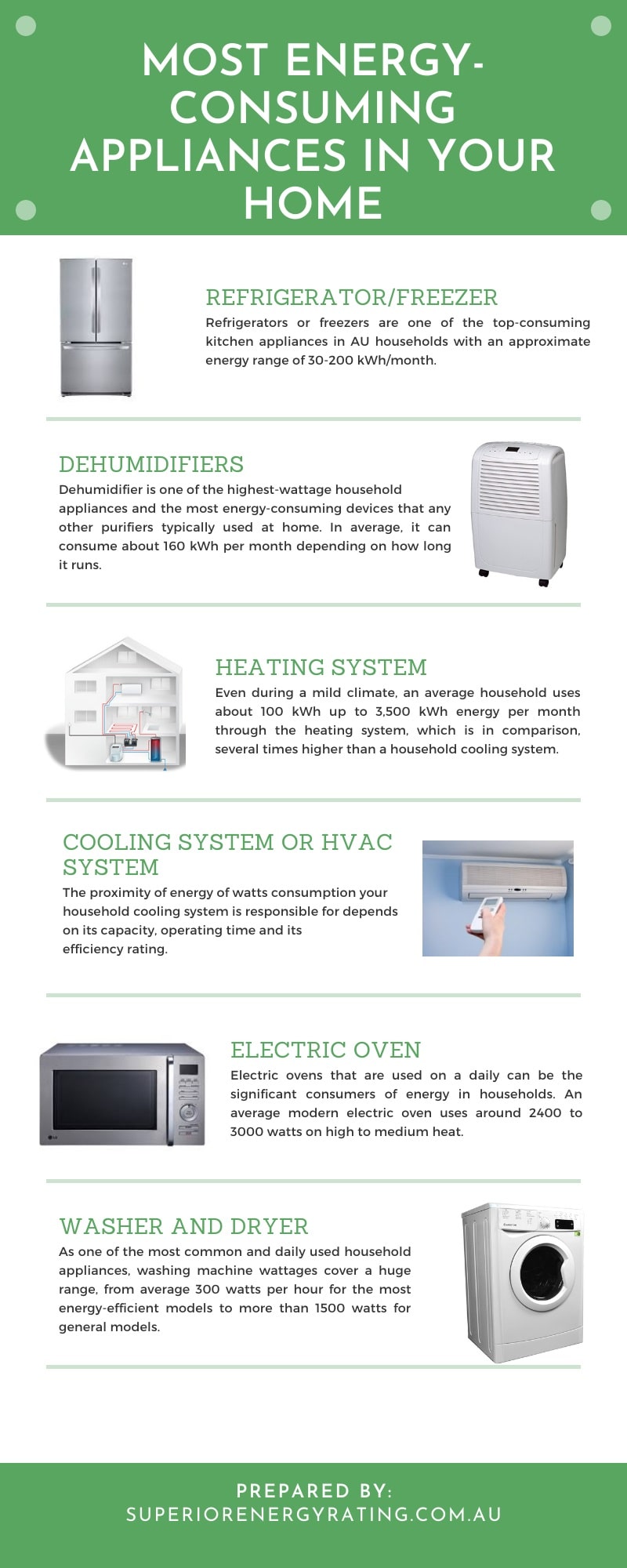
Refrigerator/Freezer
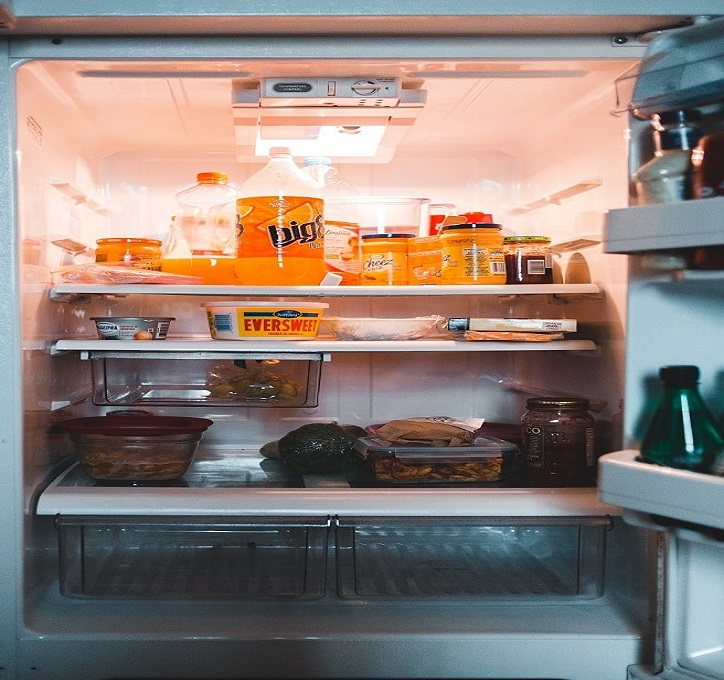
Refrigerators or freezers are one of the top-consuming kitchen appliances in AU households with an approximate energy range of 30-200 kWh/month. Energy usage rates may vary across the regions, but since the refrigerator runs 24/7, its mostly responsible for around 13% of your monthly energy bill. Even though new eco-friendly refrigerating technology with the high-efficiency unit has been helping with lowering utility bills tremendously, many households still have refrigerators with old technology.
Ways to reduce the consumption
Consider replacing your old model with new energy rated refrigerator to ensure they use less energy in the process of continually refrigerating. All new freezers and refrigerators sold in Australia must meet the Minimum Energy Performance Standards (MEPS). Look for a model that uses refrigerant and blowing agent for the insulation foam, such as a hydrocarbon like butane or pentane.
In case you don’t want to invest in a new model, make sure to operate the internal temperature optimally to reduce consumption while saving on electricity.
Dehumidifiers
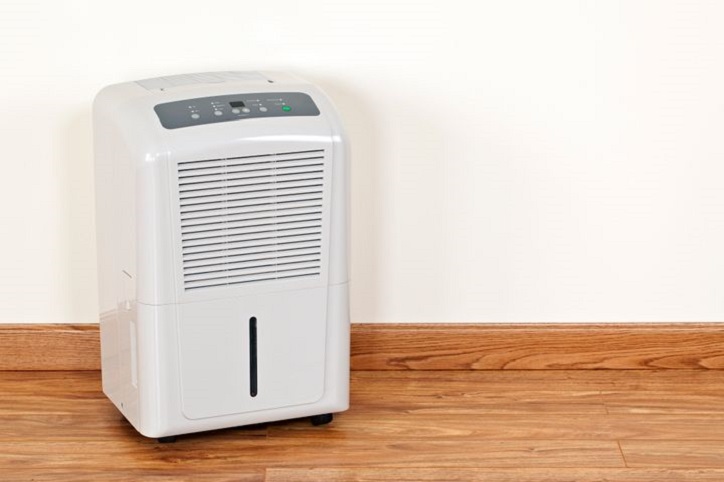
Image Source: huffpost.com
A dehumidifier is highly effective in keeping home’s humidity levels in check and reducing mould-mildew growth. But it’s also no secret that a dehumidifier is one of the highest-wattage household appliances and the most energy-consuming devices that any other purifiers typically used at home. In average, it can consume about 160 kWh per month depending on how long it runs.
In real-time, an electric dehumidifier’s operating cost depends on the humidity entering the space, the size of the space itself and the total amount of time you need to use it. If you live in a humid, moisture-prone area, you may have to leave the dehumidifiers to run most of the time, which can consume a vast amount of power.
Ways to reduce the consumption
If you’re looking for an alternative device, choose modern energy efficiency rated multi-purpose air conditioner with a dehumidifying feature. And if not, consider improving your room ventilation and increasing room temperature during the winter season.
You can also use charcoal deodorization or calcium chloride products at home which are super absorbent to moisture, even though these are short life-spanned solutions.
Heating System
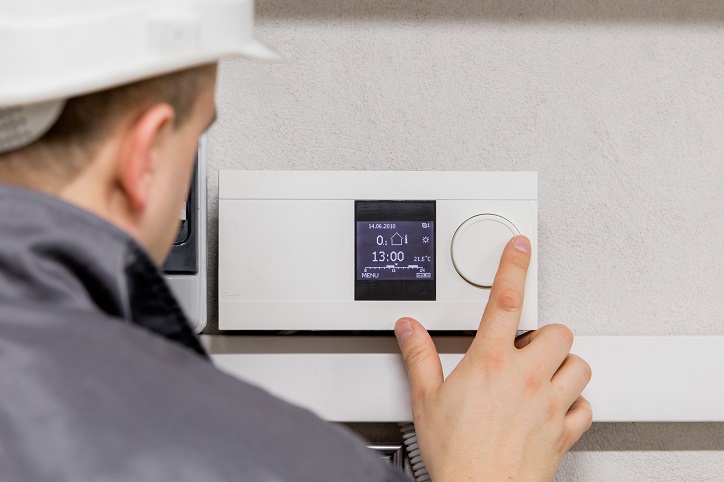
A heating system or heater is a common household appliance to regulate the internal temperature when the external heat frequently wanes in downward directions. Even during a mild climate, an average household uses about 100 kWh up to 3,500 kWh energy per month through the heating system, which is in comparison, several times higher than a household cooling system. In other words, it’s one of the most energy-consuming household appliances that use about 27 percent of your home’s electricity. But thankfully, modern buildings with energy-efficient designs can significantly reduce consumption through the upgraded heating unit and insulation system.
Ways to reduce the consumption
To help reduce your heating bills, make the best use of a programmable thermostat. All you have to do is to simply program the thermostat to change the temperature without manually adjusting every day. This will help you upgrade your heating unit into more than 97% energy efficient compared to the average models.
Cooling System or HVAC System

The proximity of energy of watts consumption your household cooling system is responsible for depends on its capacity, operating time and its efficiency rating. Not to mention, utilizing the cooling system significantly increases your energy bills during the warmer seasons, when you use about 200 to 1,800 kWh energy per month. A switch to high-efficiency energy rated household cooling system implementation can reduce cooling loads in homes by 20–50%.
Ways to reduce the consumption
Along with using a programmable thermostat, you can also take simple steps to improve your cooling system’s overall efficiency using proper insulation and coolant charge. Make sure to have at least 16 to 41 centimetres of insulation in your attic to keep more of the external heat out of your house.
Electric Oven
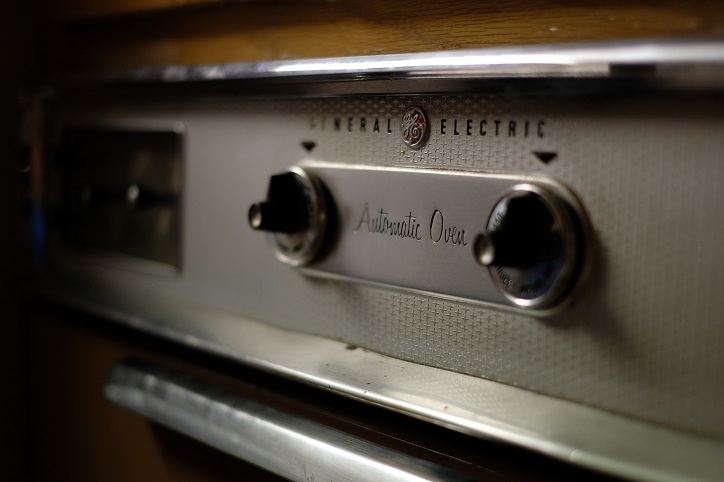
Electric ovens that are used on a daily can be the significant consumers of energy in households. Depending on how efficient the oven model is, how much heat that has been used, how often it’s been used- you can calculate how much your oven costs to run. An average modern electric oven uses around 2400 to 3000 watts on high to medium heat. As one of the ‘heavy-draw’ household appliances, the energy consumption rate and the monthly bill can quickly add up if you’re not careful.
Ways to reduce the consumption
Instead of overreliance on electric oven, consider switching from using electric oven to toaster, stove or microwave oven to save electricity. These alternatives emit less heat with faster cooking results.
Read another article on Technologies of The Future to Make Our Home More Energy Efficient
Washer and Dryer

As one of the most common and daily used household appliances, washing machine wattages cover a huge range, from average 300 watts per hour for the most energy-efficient models to more than 1500 watts for general models. Cloth dryers are also real energy hogs, as they spin and produce quite a lot of heat to dry the washed fabrics. A typical dryer uses from 1800 to 5000 watts per months.
Ways to reduce the consumption
The most effective way to save energy using a washing machine and dryer is to run it during the daytime with solar power. You can further reduce the energy consumption of your washing machine with solar by having hot water connected through a machine, which is already heated by the solar system, instead of heading the water within the washing machine.
You can also choose an energy efficiency rated washing machine. When you’re in the market for a new washing machine, pay attention to the energy efficiency ratings. The NSW Office of Environment, Energy, and Science suggest for a washing machine with at least a 3.5-star rating. Also, choose a washing machine that senses the weight load and adjusts the water level accordingly.
Images Source: unsplash.com


